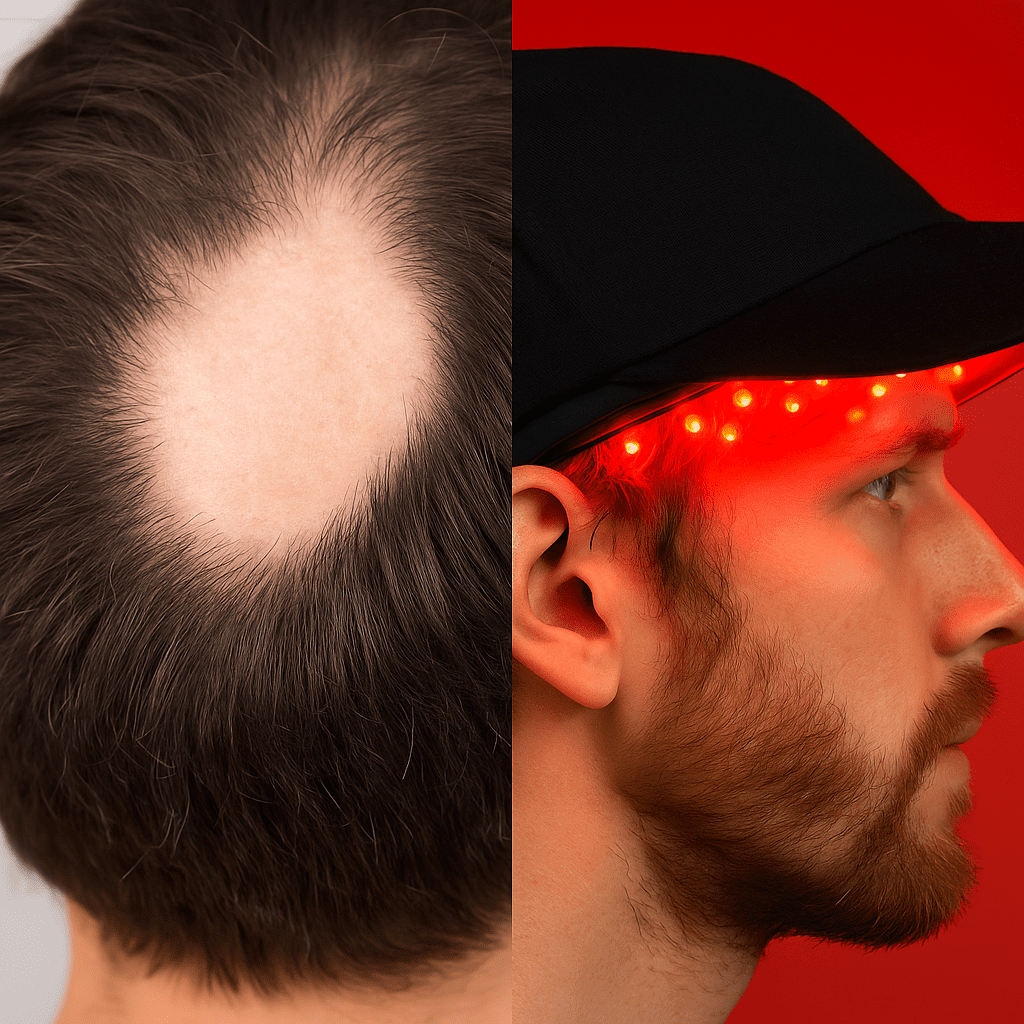When comparing red light therapy (RLT) and finasteride for hair loss, safety is often one of the top concerns. Both treatments aim to address androgenetic alopecia, but they operate in fundamentally different ways — and their risk profiles reflect that.
💊 Finasteride: Effective but Risky for Some
Finasteride is a 5-alpha-reductase inhibitor. It works by blocking the conversion of testosterone into dihydrotestosterone (DHT), the hormone largely responsible for male pattern baldness. While effective, especially in the crown area, this mechanism can cause side effects because it alters hormonal balance throughout the body.
Documented side effects may include:
Reduced libido
Erectile dysfunction
Brain fog or mood changes
Depression or anxiety in some cases
Although only a minority experience severe effects, the term Post-Finasteride Syndrome (PFS) has emerged to describe lasting sexual and psychological symptoms. Even though it’s rare and debated in the literature, it’s enough to give many users pause.
🔴 Red Light Therapy:
Localized, Non-Hormonal, Low-Risk
Red light therapy works via photobiomodulation — using light in the 630–670nm (red) and 810–850nm (near-infrared) ranges to stimulate hair follicles. It enhances blood flow, mitochondrial energy production (ATP), and reduces inflammation. Crucially, it does not alter hormone levels.
Because RLT is localized and non-invasive:
There are no systemic side effects
It’s considered safe for both men and women
It can be used in combination with other treatments (like minoxidil or finasteride) without interference
The only mild effects reported are:
Temporary scalp warmth
Mild dryness or irritation if overused
No long-term complications have been documented in peer-reviewed studies.
👥 Which Should You Choose?
It depends on your goals and risk tolerance:
Finasteride may produce faster results for DHT-driven hair loss, but carries risk — especially for long-term use.
Red light therapy is slower to act but safer and sustainable for ongoing use without worry.
Many users now try red light therapy first, or combine both — using finasteride for a limited time while letting red light therapy support long-term follicle health.





